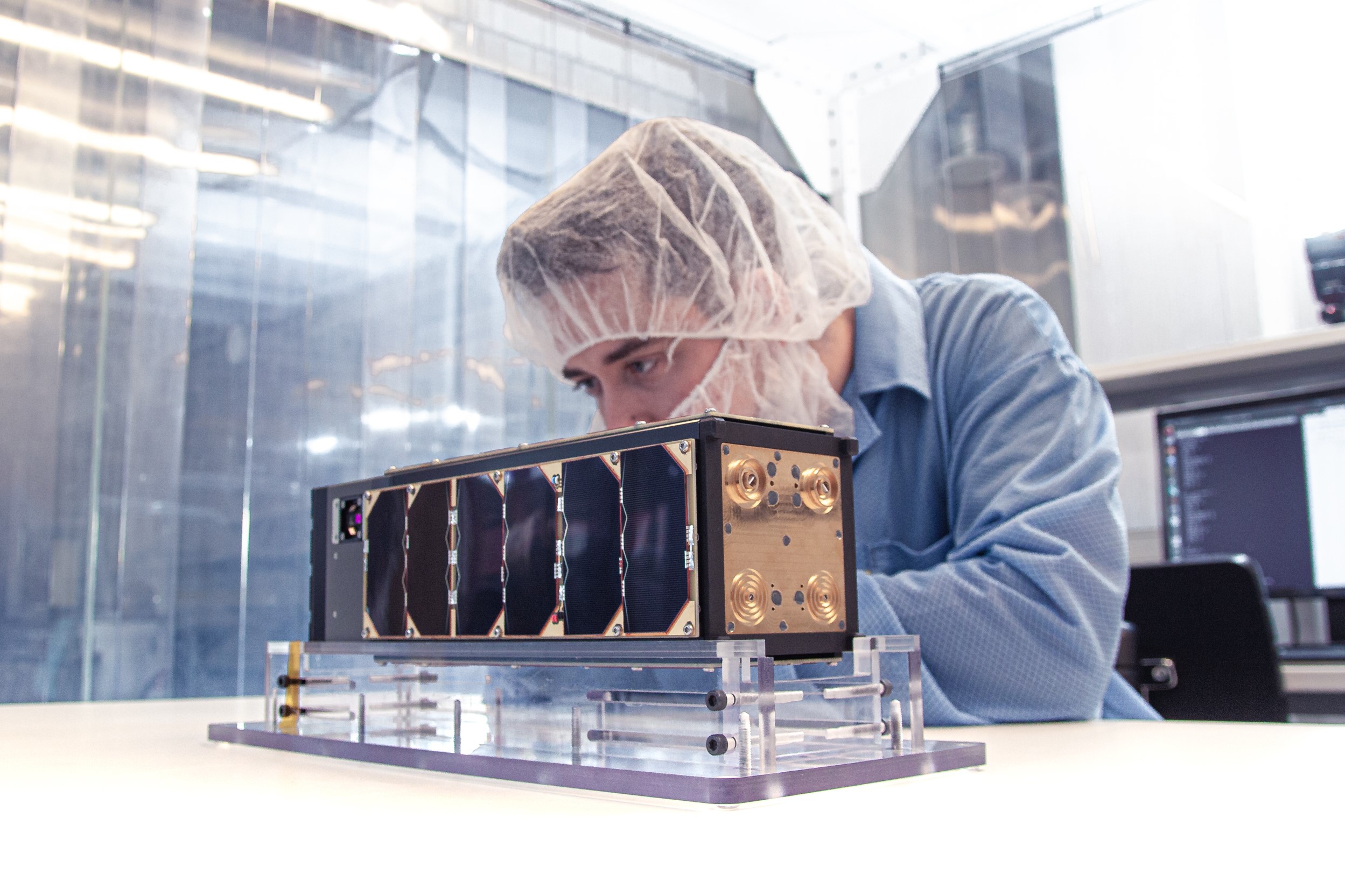[Editor’s note: Kuva Space was previously known as Reaktor Space Lab from the formation of the company in April 2016 until the end of September of 2021. This blog post was written before the Kuva Space brand renewal.]
It’s been 5 years since we started on this journey to space. It has also been a while since we updated what’s going on with the company, so here goes:
Our first satellite Reaktor Hello World has been in orbit for more than 2 years. It has surpassed its planned nominal lifetime and all commissioned subsystems continue operating nicely, including its groundbreaking hyperspectral imager.

Reaktor Hello World being prepared for thermal vacuum testing in 2018
The follow-up to RHW, our 3U W-Cube, the first Finnish satellite ordered by ESA, has been completed and it is sitting on the cleanroom table, waiting for its launch to finally take place later this year. As it tends to do, COVID-19 has reduced the availability of satellite launches momentarily, but the situation seems to be clearing now. Our international partners, including the project prime Joanneum Research, are already eagerly waiting for the results from this first-of-a-kind mission to study the propagation of extremely high frequency signals in the upper layers of the atmosphere. These results will help design future telecom satellites for high data rate communication services on previously non-utilized bands of the radio spectrum.

W-Cube assembled and waiting for launch in RSL cleanroom
Meanwhile, our third satellite, Sunstorm, has been finished as well. It is also pending consolidation of the launcher, after which it shall be subjected to the launch and space environment test campaign and start waiting for the launch. Sunstorm will demonstrate the feasibility of a new type of solar X-ray instrument in the space environment. After the demonstration, this instrument design will be used on scientific Solar and space weather missions, including ESA’s Lagrange mission. The instrument on Sunstorm can also be used in the operational study of solar X-ray phenomena.

Sunstorm right after the initial integration of the whole satellite
Sadly, the APEX asteroid mission where we were providing the satellite platform did not get the required funding and has been put on hold. RSL continues to collaborate with European efforts for deep-space and asteroid missions in the new MILANI cubesat mission and beyond that.
Building on the success of RHW, we are in the process of ramping up the hyperspectral imaging field with a commercial new development. Stay tuned for more announcements to follow!

